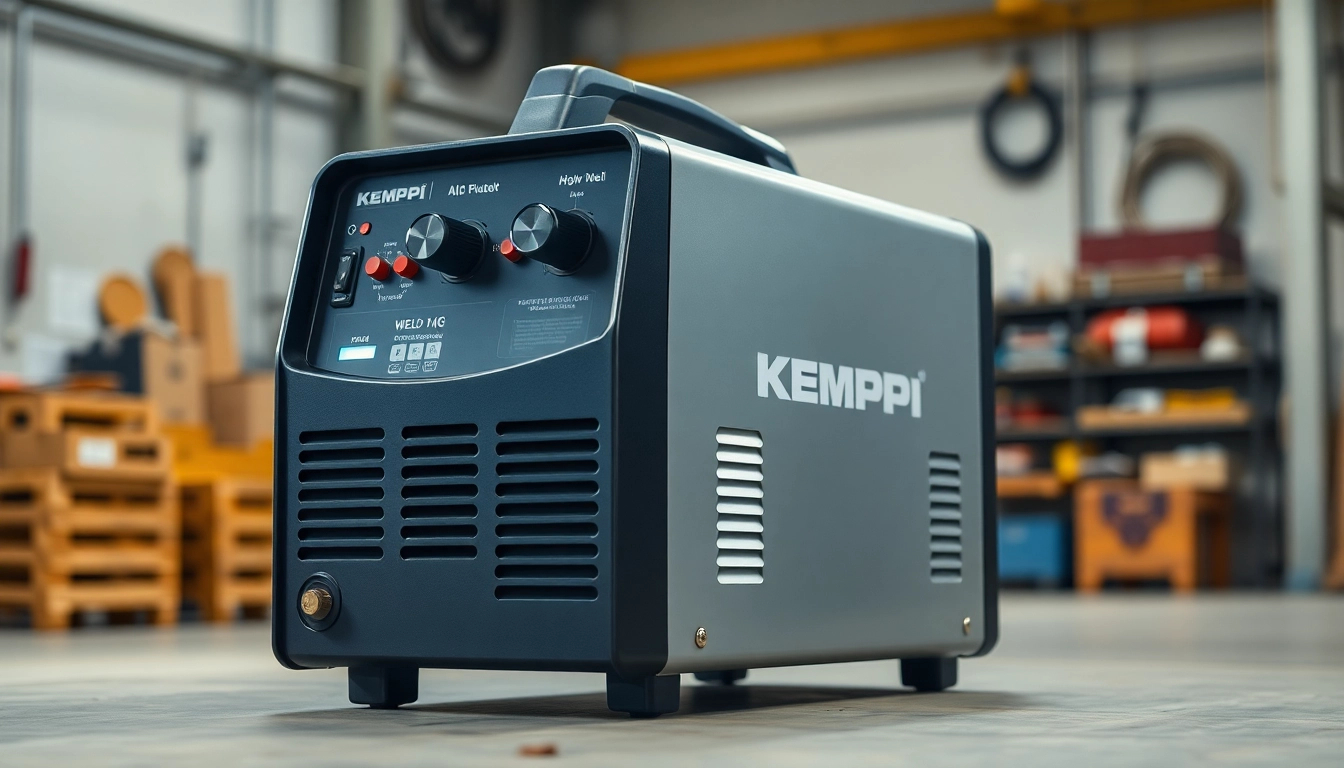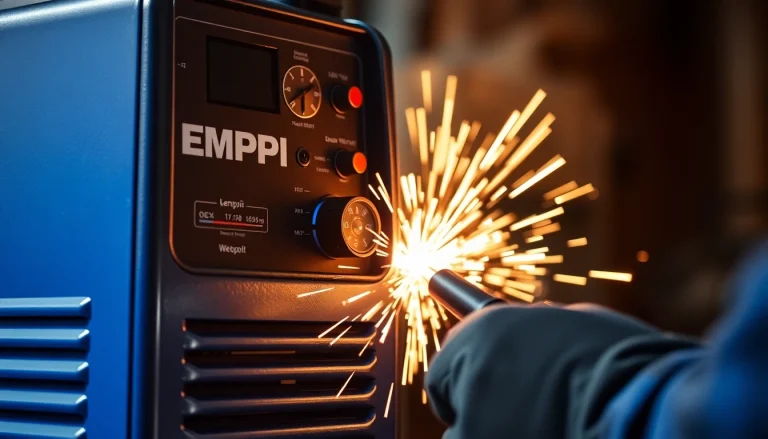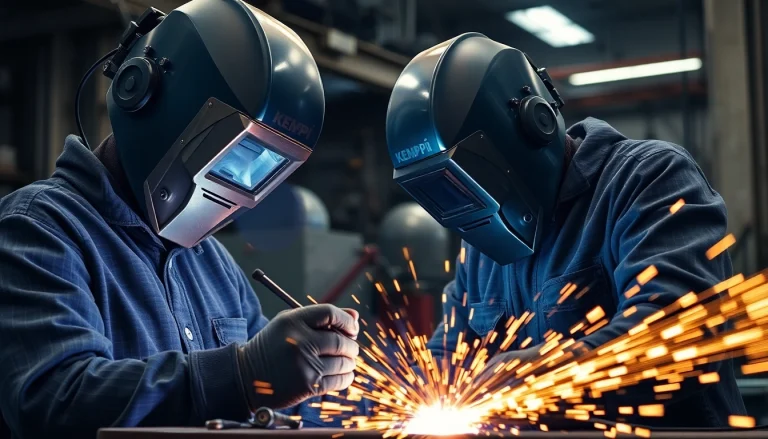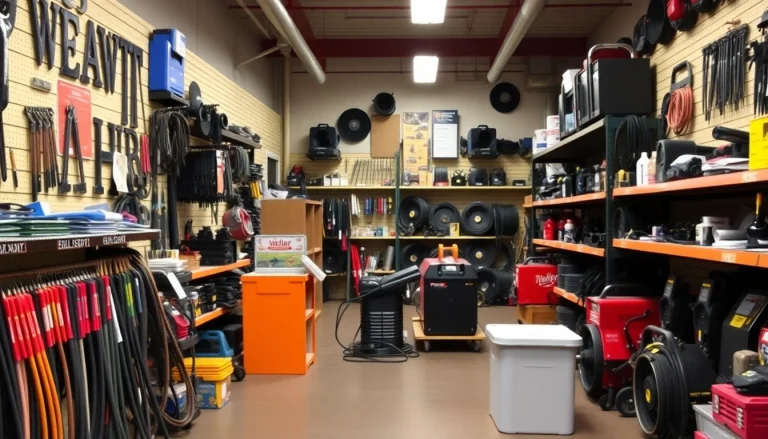Introduction to Kemppi Welders
When it comes to the arc welding industry, kemppi welders have gained a reputation for precision, reliability, and advanced technology. Founded in 1949, the Kemppi Group has evolved into a global leader in the design and manufacturing of welding equipment, particularly known for its innovative solutions that cater to both industrial and professional needs. With a commitment to improving welding quality and efficiency, Kemppi continues to set benchmarks in the welding world.
What Sets Kemppi Welders Apart?
Kemppi welders are distinguished by several key features that elevate them above traditional welding machines. First, their high-quality construction ensures durability even in challenging environments, making them suitable for everything from automotive repair shops to large-scale industrial fabrication. Additionally, their advanced technology includes intuitive interfaces and precise control systems that enhance both the usability and overall welding experience. The integration of software solutions allows for better monitoring and optimization of welding performance, contributing to reduced material waste and increased productivity.
Overview of Available Models
The range of Kemppi welders includes numerous models tailored for different applications, including MIG, TIG, and manual welding. Notable models include:
- Kemppi MasterMIG Series: A versatile solution for MIG welding, ideal for both professionals and hobbyists.
- Kemppi Minarc Series: Portable TIG and MMA welding machines known for their lightweight design and exceptional performance.
- Kemppi FastMig Series: Designed for high-performance welding in the heavy industry, featuring advanced control systems for precision.
Applications of Kemppi MIG Welders
Kemppi MIG welders find application across various sectors, including:
- Automotive Industry: Used for manufacturing and repairing vehicle frames and components.
- Construction: Essential for steel frameworks and machinery assembly.
- Shipbuilding: Ideal for welding in challenging marine environments.
Choosing the Right Kemppi Welder
Factors to Consider
Selecting the appropriate Kemppi welder involves several critical considerations:
- Type of Welding: Identifying the primary type of welding you will perform—MIG, TIG, or MMA—should guide your model selection.
- Welding Thickness: The thickness of the materials to be welded will determine the power output required in a welder.
- Frequency of Use: Regular users may benefit from investing in a heavier-duty model, while occasional welders might opt for a more portable option.
Comparing Kemppi Models
When comparing different Kemppi models, it’s essential to examine features such as:
- Power Output: Higher outputs provide the capacity to weld thicker materials.
- Portability: If you need to move between work sites, consider lighter models that are easier to transport.
- Technological Features: Advanced models offer features like automatic settings, which can significantly enhance welding quality.
User Reviews and Testimonials
Insights gained from user reviews highlight the strengths and weaknesses of different Kemppi welders:
Many users praise the Kemppi MasterMIG 205 for its excellent arc stability and ease of use, citing it as a reliable choice for both novice and experienced welders. Conversely, some reports regarding the Kemppi Minarc 220 mention the learning curve associated with its advanced controls, although users note that the eventual output justifies the initial investment in learning.
Features of Kemppi MIG Welders
Advanced Technology in Welders
Kemppi welders are equipped with cutting-edge technology that facilitates optimum welding performance. Features such as:
- Intelligent Arc Control: This system adjusts the welding parameters in real-time to maintain a consistent arc.
- Digitized Settings: Allow users to save their settings for different projects, ensuring high repeatability in welds.
- Smart Welding Software: Available in certain models, this software assists with diagnostics, maintenance alerts, and overall efficiency tracking.
Power Options and Efficiency
Power options vary among Kemppi models to accommodate different welding applications. The company focuses on energy efficiency, ensuring that each model maximizes output while minimizing electricity consumption:
- Multi-Voltage Compatibility: Many welders can operate on varying voltage levels, making them versatile for different locations.
- FastArc Technology: Enhances welding speed while ensuring weld quality remains uncompromised.
Safety Features and Compliance
Safety is paramount when operating welding equipment. Kemppi welders include features that prioritize user safety and compliance with industry standards:
- Overheat Protection: Automatically shuts down the unit to prevent overheating.
- Electrical Safety Compliance: All models are designed with rigorous safety standards in mind to protect the user and equipment.
Maintenance and Care for Kemppi Welders
Routine Maintenance Tips
Maintaining a Kemppi welder is crucial for ensuring long-term performance. Routine maintenance includes:
- Regular Cleaning: Ensure the welder is dust-free and that all vents are clear to avoid overheating.
- Inspecting Cables and Connections: Regularly check for wear and tear to avoid electrical hazards.
- Replacing Consumables: Nozzles, contact tips, and liners should be replaced as necessary.
Troubleshooting Common Issues
Even high-end welders like those from Kemppi may encounter issues. Here are some common problems along with troubleshooting advice:
- Inconsistent Arc: Check for gas flow issues or worn-out contact tips.
- Excessive Spatter: This could be a result of incorrect settings or poor wire feeding.
When to Seek Professional Help
If the issues persist despite troubleshooting, seeking professional maintenance is recommended. Additionally, if you notice any unusual noises or performance irregularities, it may be time for expert evaluation to avoid further damage.
The Future of Welding with Kemppi Technology
Innovations in Welding Equipment
The welding industry is rapidly evolving, and Kemppi is at the forefront of this evolution, constantly integrating new technologies such as:
- Artificial Intelligence: AI is used to optimize welding processes and enhance output quality.
- Augmented Reality: Training and setup processes are being revolutionized through new AR applications for welders.
The Role of Automation
Automation plays a crucial role in modern welding practices, and Kemppi is investing in automated welding solutions. These systems not only streamline the welding process but also enhance productivity and consistency in output:
- Robotic Welding Integration: Allows for precision and speed in complex welding tasks.
- Remote Monitoring: Enables operators to monitor welding processes from remote locations.
Looking Ahead: Trends in the Welding Industry
As the industry shifts, the trends that are likely to define the future of welding include:
- Increased Use of Sustainable Technologies: Focus on eco-friendly materials and processes will grow.
- Workforce Development: Programs that address skill gaps and train new welders will become increasingly important.
- Smart Equipment: Advanced welders that utilize IoT technology for enhanced functionality and user experience.








